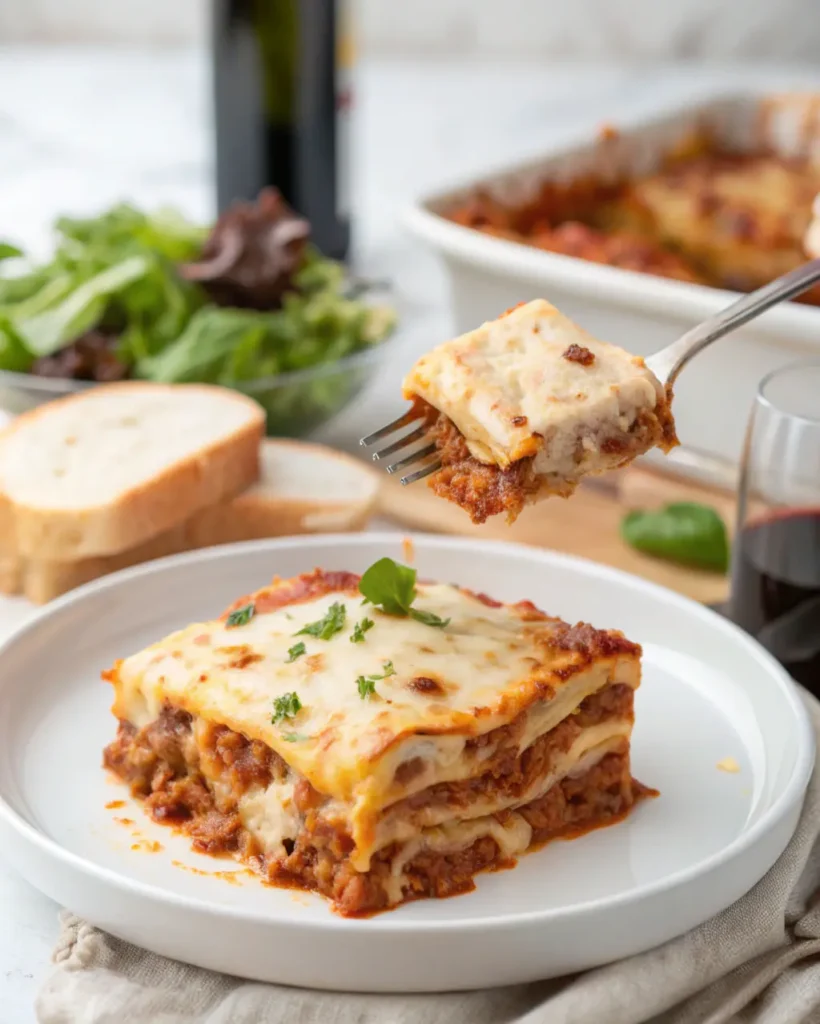
When people talk about comfort food, lasagna is usually near the top of the list. It’s warm, cheesy, and full of layers that make every bite special. In this guide, you’ll learn how to make the traditional San Giorgio noodles lasagna recipe, why it has been a family favorite for decades, and what little details bring out the best flavors. From the noodles to the sauce, every layer matters—and this recipe shows you how to get it right.
Table of Contents
Table of Contents
Grandma’s Sunday Lasagna
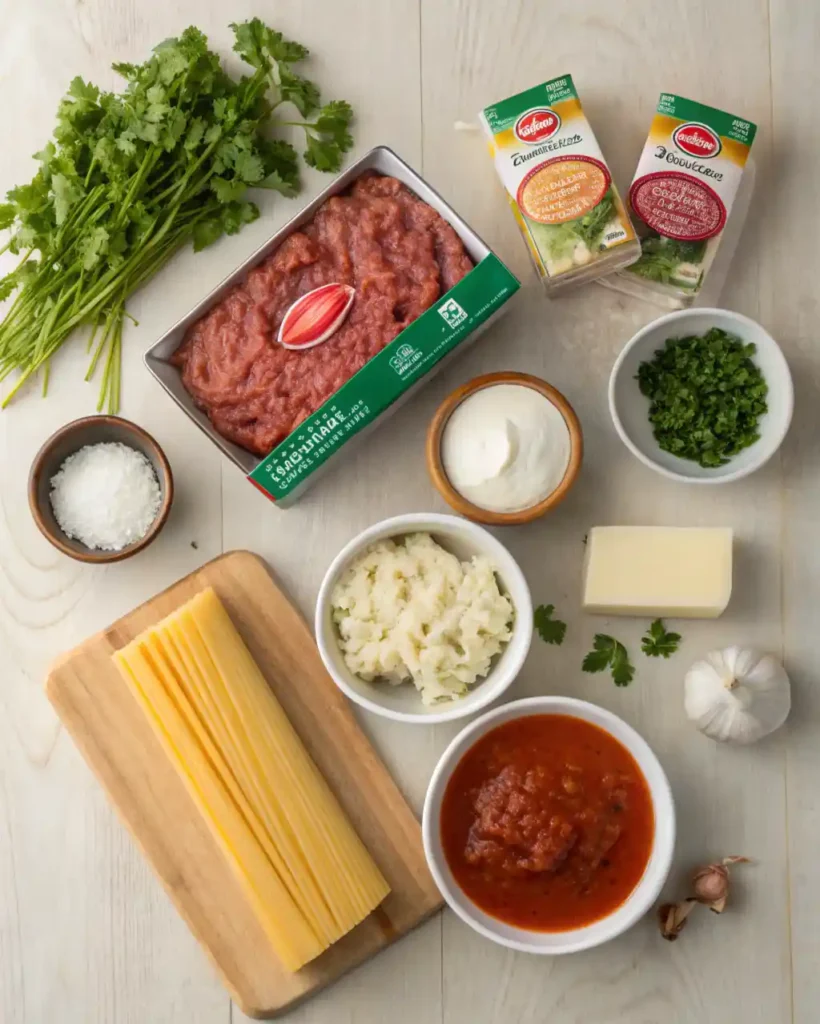
Growing up, Sundays meant lasagna at my grandmother’s house. The kitchen smelled of simmering sauce, garlic, and mozzarella melting in the oven. And always on the counter sat a box of San Giorgio noodles, ready for layering. She believed the San Giorgio noodles lasagna recipe was more than food—it was a way to bring people together. Family and friends would gather around, waiting for that first slice with bubbling cheese on top.
That memory is why lasagna has such a timeless place on the table. It’s hearty enough for celebrations yet easy enough for weeknight meals. Today, families all over the country still rely on San Giorgio pasta that cooks perfectly every time. If pasta holds a special place in your kitchen too, you’ll love adding dishes like this penne pomodoro recipe to your menu alongside lasagna nights.
Why San Giorgio Stands Out
Since 1914, San Giorgio has been known for making pasta that cooks evenly and holds up beautifully in baked dishes. Their lasagna noodles are sturdy yet tender, making each layer of a San Giorgio noodles lasagna recipe both flavorful and stable. That reliability is what keeps home cooks coming back to the brand generation after generation.
Another reason this recipe works so well is its flexibility. You can prepare the traditional beef and tomato sauce, add sausage for extra richness, or go vegetarian with roasted vegetables. Whatever you choose, San Giorgio noodles support every bite. And if you’re looking for another family-style meal with a twist, you might enjoy this hearty cottage cheese pizza bowl that shares the same cheesy comfort.
Lasagna isn’t just dinner—it’s tradition. Starting with San Giorgio pasta ensures you’re making a dish that carries more than flavor. It carries history, warmth, and the joy of sharing food with the people you love.
The Heart of the Meat Sauce
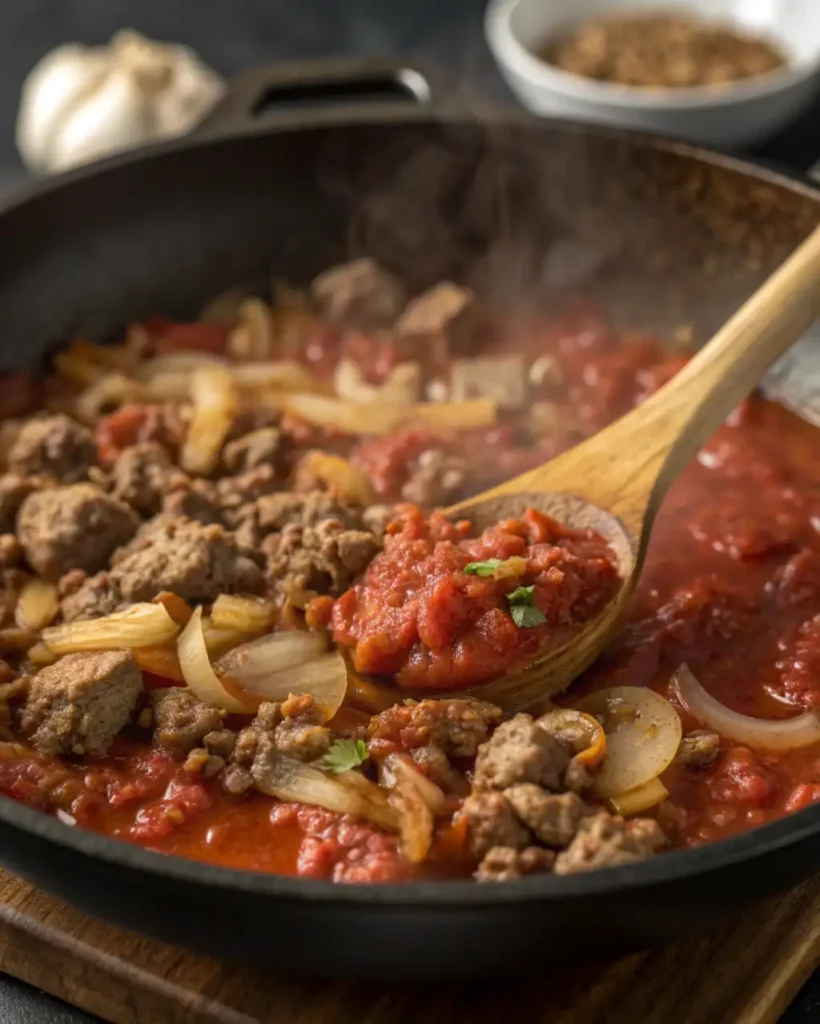
Every great San Giorgio noodles lasagna recipe begins with a flavorful meat sauce. Start by browning ground beef with onion and garlic until the meat is cooked through and fragrant. Some cooks like to mix beef with Italian sausage for a richer taste, while others stick to classic beef for a lighter flavor. Once the meat is ready, add tomato sauce or crushed tomatoes, a spoonful of tomato paste, and a pinch of oregano and basil. Let the sauce simmer until it thickens—this step gives your lasagna depth and keeps the noodles moist as they bake.
My grandmother always said the secret to a memorable sauce was patience. Letting it bubble slowly allows the flavors to meld together. This technique works beautifully in lasagna, but it also makes simple dishes like Blackstone tortellini shine when paired with a bold tomato base. The sauce becomes the heart of every bite, and it’s what makes the San Giorgio noodles lasagna recipe taste so comforting and authentic.
Choosing the Right Cheese Blend
The cheese layer is what sets lasagna apart from other pasta bakes. A classic San Giorgio noodles lasagna recipe calls for ricotta cheese mixed with eggs and parsley, which creates a creamy filling that holds its shape. Some families prefer cottage cheese for a lighter texture, and both options work well depending on taste. Layer that mixture between noodles, then add mozzarella for stretch and Parmesan for sharpness.
The combination of these cheeses makes every forkful creamy, melty, and slightly nutty from the Parmesan. When it bakes, the mozzarella forms that golden top layer everyone fights over at the table. To keep things balanced, I often prepare a side of vegetables or a lighter dish like miso soup made simple to pair with lasagna’s richness.
The beauty of the cheese blend is that it adapts to what you have on hand. Whether you stick with ricotta or try cottage cheese, the result is a creamy layer that completes the hearty sauce and tender noodles. And when you pull the bubbling pan from the oven, you’ll see why this recipe has been loved for generations.
Do You Boil San Giorgio Noodles?
When preparing the San Giorgio noodles lasagna recipe, many cooks wonder if they should boil the pasta first. The answer depends on which San Giorgio noodles you choose. If you’re using the traditional version, it’s best to boil them in salted water until they’re slightly firm. This ensures they finish cooking in the oven without turning soggy. If you’re working with San Giorgio’s oven-ready noodles, you can skip the boiling step and layer them straight into the dish.
The important detail is making sure your sauce has enough liquid to soften the noodles as they bake. Too little sauce leaves the pasta stiff, while too much can make the lasagna watery. Finding this balance is part of the magic of the San Giorgio noodles lasagna recipe, which is why it remains such a dependable choice for home cooks. This same principle applies when cooking other pasta favorites, like the Blackstone tortellini recipe, where the right texture makes all the difference.
How Many Layers Make It Perfect?
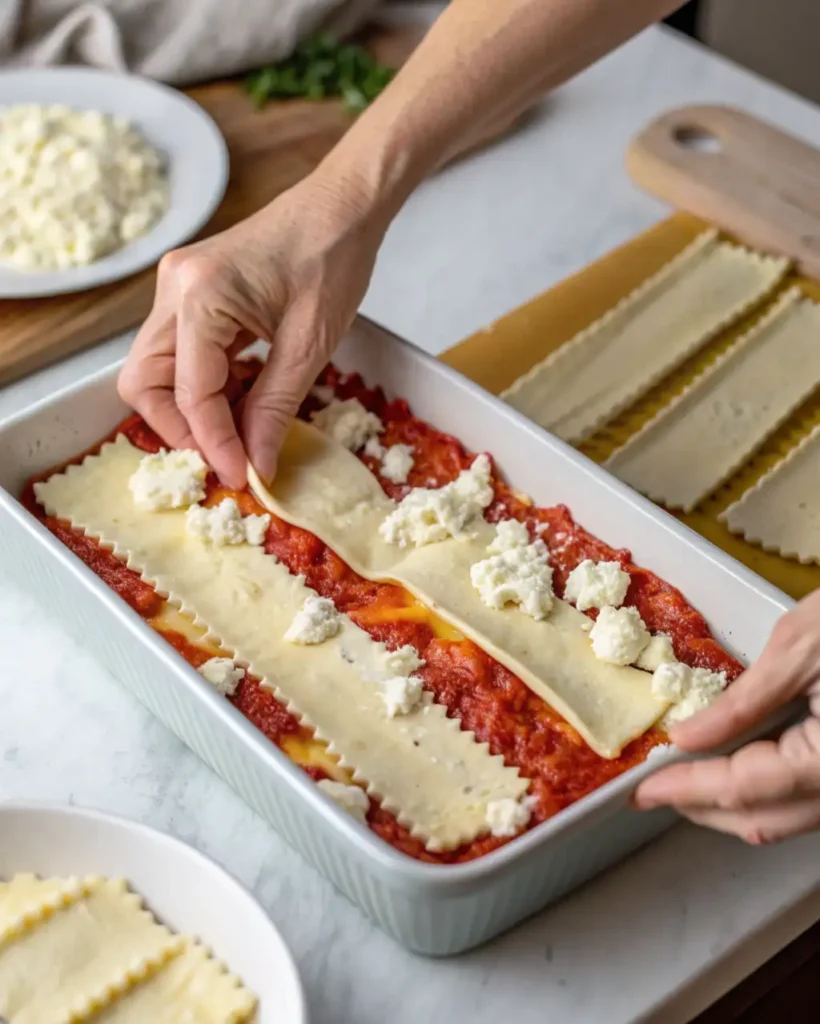
Another question that comes up often is how many layers create the ideal lasagna. A traditional San Giorgio noodles lasagna recipe usually has three full layers—sauce, cheese, and noodles repeated until the pan is filled. Some families prefer going taller with four or five layers, making the dish even more hearty. There isn’t one single rule, but most agree that finishing with sauce and cheese on top keeps the lasagna moist and delicious.
Each layer should be spread evenly so the finished slices hold together instead of falling apart. By stacking carefully, you’ll end up with a lasagna that cuts cleanly and serves beautifully. Paired with something fresh, like this pineapple cucumber salad, the richness of the layers balances perfectly with crisp flavors on the side.
The truth is, whether you stick to three layers or stack it higher, the San Giorgio noodles lasagna recipe delivers that comforting bite every time. The noodles stay tender, the cheese melts golden, and the sauce ties it all together in a way that feels both traditional and special.
FAQ About San Giorgio Noodles Lasagna Recipe
What is the secret to a great lasagna?
The secret to a great San Giorgio noodles lasagna recipe is balance. Rich sauce, creamy cheese, and sturdy noodles should all work together. Let the sauce simmer so the flavors deepen, and don’t rush the resting time after baking. Allowing it to cool for at least 10 minutes helps the layers hold together.
Should I use ricotta or cottage cheese in lasagna?
Both ricotta and cottage cheese work well in a San Giorgio noodles lasagna recipe. Ricotta gives a creamier, richer layer, while cottage cheese offers a lighter texture. Some families even mix the two for the best of both worlds.
How many layers of pasta should a lasagna have?
Traditionally, a San Giorgio noodles lasagna recipe has three layers of noodles with cheese and sauce in between. If you want a taller, heartier version, you can go for four or even five layers, depending on your pan size.
Is it necessary to boil lasagna noodles before baking?
If you’re using classic noodles in the San Giorgio noodles lasagna recipe, boiling is important to get the right texture. With San Giorgio oven-ready noodles, you can skip this step and save time. Just make sure you use enough sauce to soften them as they bake.
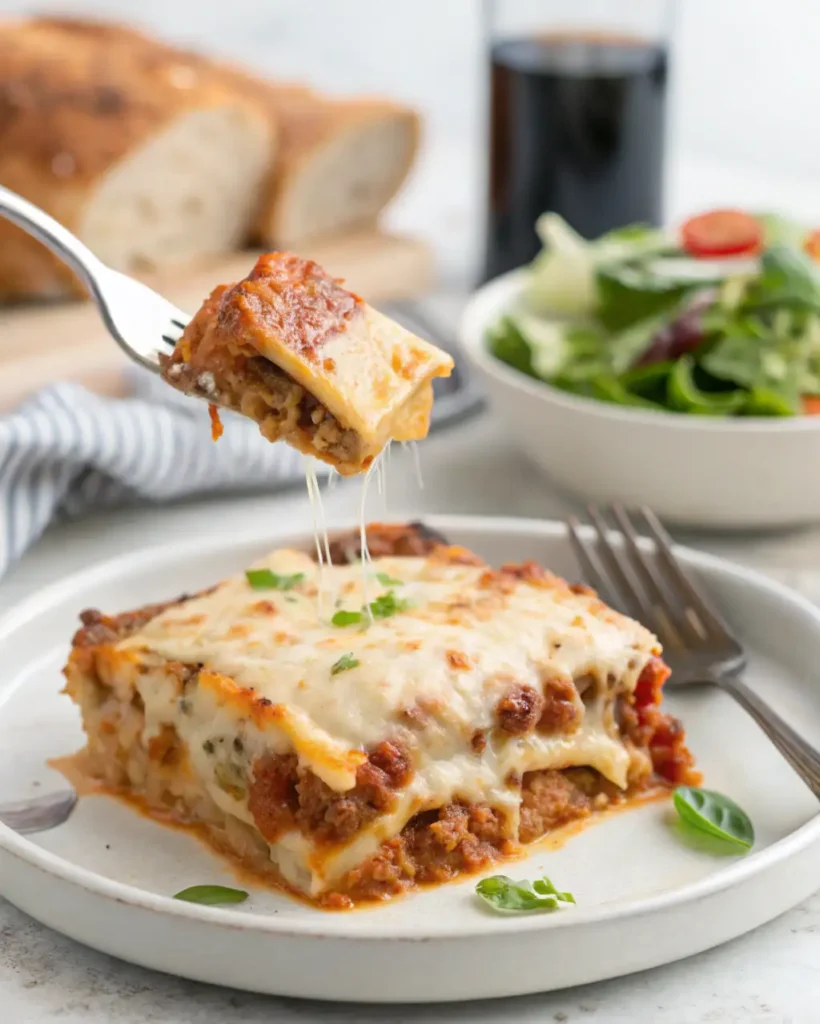
Bringing It to the Table
Once your San Giorgio noodles lasagna recipe comes out of the oven, let it rest before slicing. This simple step makes serving neat and easy. Pair it with garlic bread and a crisp salad for a complete meal that satisfies everyone at the table. If you want to keep the Italian comfort food theme going, you could serve it alongside penne pomodoro for extra variety.
Lasagna also reheats beautifully, making it a smart choice for leftovers. Store portions in airtight containers, and they’ll keep their flavor for several days. For busy nights, I often pair leftovers with lighter recipes like miso soup made simple to balance out the richness.
The beauty of the San Giorgio noodles lasagna recipe is its versatility. Whether you stick to the classic beef sauce or create your own twist, each layer carries the same comfort and tradition that has made this dish a family classic for generations.
Print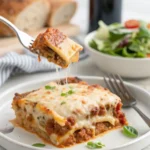
San Giorgio Lasagna Recipe: Classic Comfort the Easy Way
- Total Time: 1 hour 5 minutes
- Yield: 8 servings
Description
Classic San Giorgio lasagna recipe with layers of pasta, creamy ricotta, rich tomato meat sauce, and melted mozzarella cheese.
Ingredients
8 oz San Giorgio lasagna noodles
1 lb ground beef
2 cups pasta sauce
15 oz ricotta cheese
4 cups shredded mozzarella
1/2 cup grated Parmesan
2 eggs
2 cloves garlic, minced
1 small onion, diced
2 tbsp olive oil
2 tbsp chopped parsley
Salt and pepper to taste
Instructions
1. Cook San Giorgio noodles according to package or prepare oven-ready version.
2. Brown beef with onion and garlic in olive oil until cooked.
3. Add pasta sauce, season, and let simmer 20 minutes.
4. Mix ricotta, eggs, parsley, salt, and pepper in a bowl.
5. Layer sauce, noodles, ricotta mix, and mozzarella in baking dish.
6. Repeat layers, finishing with sauce, mozzarella, and Parmesan.
7. Bake at 375°F for 40–45 minutes until golden and bubbly.
8. Let rest 10 minutes before serving.
Notes
You can substitute cottage cheese for ricotta.
For a vegetarian version, replace meat with sautéed mushrooms or roasted vegetables.
Store leftovers in airtight containers and reheat at 350°F.
- Prep Time: 20 minutes
- Cook Time: 45 minutes
- Category: Dinner
- Method: Baking
- Cuisine: Italian
Nutrition
- Serving Size: 1 slice
- Calories: 420
- Sugar: 6g
- Sodium: 580mg
- Fat: 20g
- Saturated Fat: 10g
- Unsaturated Fat: 8g
- Trans Fat: 0g
- Carbohydrates: 38g
- Fiber: 3g
- Protein: 25g
- Cholesterol: 70mg


